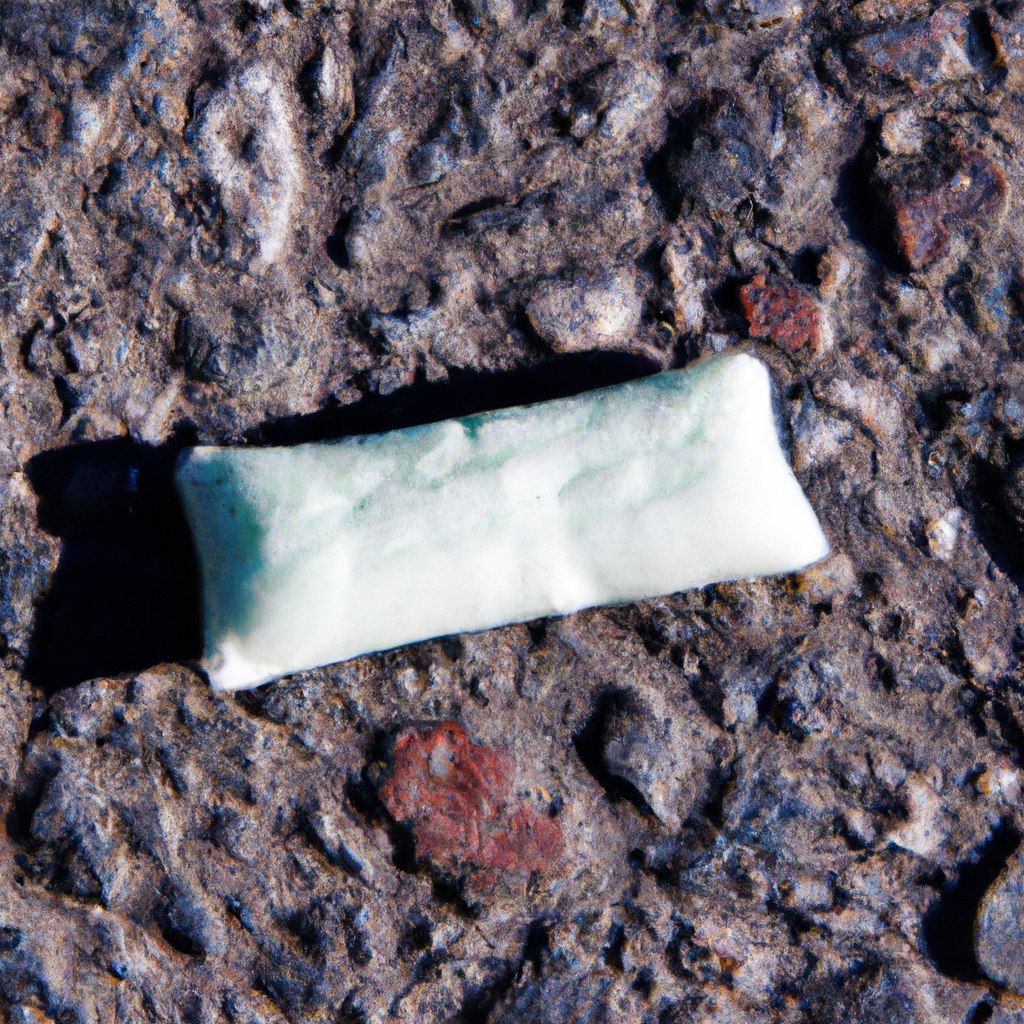
Chewing gum is a popular pastime for people of all ages, offering a burst of flavor and a satisfying chew. However, what many gum enthusiasts might not realize is that the simple act of disposing of gum improperly can have significant environmental consequences. In this article, we’ll dive deep into the world of chewing gum litter and explore the far-reaching impact it has on our environment. From the composition of gum to its persistence in our surroundings, we’ll uncover the hidden ecological costs and discuss what we can do to mitigate them.
What’s in Chewing Gum?
Chewing gum, a seemingly innocuous indulgence harbors a less benign secret within its composition. Conventional chewing gum is a concoction of synthetic rubber, plasticizers, preservatives, and artificial flavors. The core element, synthetic rubber, primarily comprises polyethylene and polyvinyl acetate, imparting the gum’s chewy texture. However, the seemingly harmless ingredients in gum are far from environmentally friendly, as they are non-biodegradable and can endure in the ecosystem for an extended period, ranging from years to even decades.
This synthetic nature poses a grave concern for the environment. As discarded gum ends up on sidewalks, streets, and public spaces, it transforms into a persistent and unsightly issue that poses numerous ecological risks. Its resistance to natural degradation means it can withstand the forces of rain, wind, and foot traffic, perpetuating its presence as an eyesore and a menace to our surroundings.
The consequences of gum litter extend beyond aesthetics, delving into environmental and economic realms. The persistence of chewing gum as litter contributes to microplastic pollution, endangering aquatic life and ecosystems. Wildlife, especially birds, may ingest gum, leading to digestive complications and potential harm. Additionally, local authorities and businesses bear the economic burden of gum litter removal, diverting resources from more constructive uses.
Understanding the environmental implications of chewing gum composition is crucial. Addressing this issue involves raising awareness, promoting responsible disposal, and advocating for biodegradable alternatives. By embracing these measures, we can collectively minimize the environmental impact of chewing gum litter and preserve our environment for future generations.
The Persistence of Gum Litter
The stubborn persistence of gum litter is a concerning issue. When gum is carelessly discarded, it adheres to sidewalks, streets, and public areas, resulting in unattractive and challenging-to-clean-up messes. Due to its non-biodegradable nature, gum withstands the elements, enduring through rain, wind, and constant foot traffic. This resilience transforms it into a lasting eyesore in our environment, posing a significant long-term problem.
This long-term persistence of gum litter not only mars the aesthetics of our surroundings but also exacerbates its environmental impact. As gum continues to linger on streets and sidewalks, it breaks down into smaller fragments, ultimately contributing to the growing problem of microplastic pollution. These tiny gum particles can be washed into storm drains, ultimately finding their way into rivers, lakes, and oceans.
Once in aquatic environments, these microplastics pose a severe threat to marine life and ecosystems. Marine animals can ingest these particles, leading to harmful consequences for their health. Additionally, the accumulation of microplastics in water bodies can disrupt the delicate balance of aquatic ecosystems, affecting not only marine creatures but also the communities that rely on these ecosystems for sustenance and livelihoods.
The persistence of gum litter also has economic implications. Local municipalities and businesses are burdened with the costly and time-consuming task of gum removal. Funds that could be allocated to more pressing environmental and community needs are diverted towards the ongoing battle against gum litter, straining resources.
The Environmental Consequences
As chewing gum breaks down over time, it fragments into smaller pieces, effectively becoming microplastic pollution. These tiny particles can find their way into water bodies, where they pose a threat to aquatic life and ecosystems.
Gum discarded in parks and natural areas can be ingested by wildlife, causing digestive issues and potentially harming animals. Birds, in particular, can mistake gum for food, leading to severe consequences.
The cost of removing gum litter is a burden on local municipalities and businesses. Resources that could be better used for environmental conservation or community development are diverted to clean up gum-related messes.
How Can We Minimize Gum Litter?
Minimizing gum litter is a collective effort that involves a combination of awareness, responsible disposal, eco-friendly alternatives, and community engagement. Here are some effective strategies to tackle the issue of gum litter and its environmental impact.
Education
The first step in combating gum litter is to raise awareness about its environmental consequences. Schools, communities, and organizations can play a pivotal role in educating the public about the negative effects of improper gum disposal. This can be done through informative campaigns, workshops, and educational materials.
Proper Disposal
Encouraging responsible gum disposal is essential. Public areas should have designated bins for gum disposal, making it convenient for people to dispose of their gum properly. Placing these bins strategically in high-traffic areas can significantly reduce the incidence of gum being discarded on sidewalks and streets. Additionally, clear signage can remind individuals to use these bins and discourage littering.
Biodegradable Gum
An effective way to tackle the gum litter problem is to promote the use of biodegradable chewing gum. Unlike traditional gum, which is made from synthetic materials that persist in the environment, biodegradable gum is crafted from natural ingredients such as chicle gum base. These gums break down more easily in the environment, significantly reducing their ecological footprint. Supporting and advocating for biodegradable gum options can make a substantial difference in minimizing the environmental impact of gum litter.
Community Cleanups
Community engagement is crucial in maintaining a clean and gum-free environment. Organizing regular community cleanups specifically targeting gum litter removal can be highly effective. These cleanups not only beautify public spaces but also instill a sense of responsibility among residents. They provide an opportunity for community members to come together, address the issue collectively, and take pride in their surroundings. Such initiatives can be organized by local governments, schools, or community groups and can involve volunteers of all ages. By actively participating in these cleanups, individuals can witness the positive impact of their efforts in real-time.



